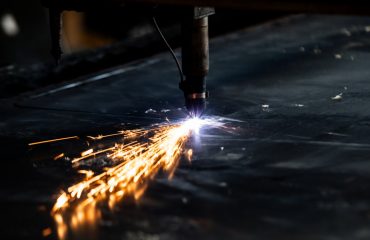Waste heat recovery (WHR) is a crucial strategy for improving energy efficiency and reducing environmental impact across various industries. While the overall system design is complex, the humble pipe plays a surprisingly significant role in the success of any WHR project. The choice of pipe material, its design, installation, and ongoing maintenance directly impact the efficiency and longevity of the entire heat recovery system. This post delves into the critical aspects of pipes within WHR projects, offering insights for engineers, project managers, and anyone interested in sustainable energy solutions.
1. Material Selection: The Foundation of Efficient Heat Transfer
The selection of pipe material is paramount in WHR. The material must withstand the high temperatures and pressures involved, resist corrosion from the waste heat stream, and possess high thermal conductivity to facilitate efficient heat transfer. Several materials are commonly employed, each with its own advantages and disadvantages:
- Stainless Steel: A popular choice due to its excellent corrosion resistance, high strength, and relatively good thermal conductivity. Different grades of stainless steel are available, allowing for selection based on specific temperature and pressure requirements. However, stainless steel can be expensive.
- Carbon Steel: A cost-effective option, but susceptible to corrosion, especially in high-temperature environments with aggressive fluids. Often requires protective coatings or linings to extend its lifespan.
- Copper: Excellent thermal conductivity makes copper an attractive option, but its cost and susceptibility to certain corrosive agents limit its applications.
- High-Performance Polymers (e.g., PEEK, PTFE): Suitable for lower temperature applications and situations where chemical compatibility is crucial. These materials offer excellent corrosion resistance but may have lower thermal conductivity compared to metals.
- Ceramic Pipes: Used in extremely high-temperature applications where other materials fail. They offer excellent thermal resistance but are brittle and require careful handling and installation.
The choice of material depends heavily on the specific waste heat stream’s characteristics (temperature, pressure, chemical composition), the required heat transfer rate, and the overall project budget.
2. Pipe Design and Sizing: Optimizing Heat Transfer and Minimizing Pressure Drop
Pipe design goes beyond material selection. The diameter, length, and configuration of the pipes significantly influence the system’s efficiency. Proper sizing is crucial to balance heat transfer and pressure drop. Smaller diameter pipes offer higher heat transfer rates due to increased surface area to volume ratio, but also lead to higher pressure drops, requiring more powerful pumps. Larger diameter pipes reduce pressure drop but decrease the heat transfer rate. Computational Fluid Dynamics (CFD) simulations are often used to optimize pipe design and minimize energy losses.
Furthermore, the pipe configuration itself can impact efficiency. Using multiple smaller pipes in parallel can increase the overall heat transfer area compared to a single large pipe. The arrangement of pipes within the heat exchanger also needs careful consideration to ensure uniform flow and optimal heat transfer.
3. Insulation: Reducing Heat Loss and Enhancing Efficiency
Insulating the pipes is critical to minimize heat loss to the surroundings and maximize the amount of recovered heat. The choice of insulation material depends on the operating temperature and environmental conditions. Common insulation materials include fiberglass, mineral wool, calcium silicate, and polyurethane foam. The thickness of the insulation layer is determined by balancing cost and performance. Thicker insulation reduces heat loss but increases material and installation costs. Proper installation of insulation is crucial to prevent thermal bridges and ensure consistent performance.
The insulation’s thermal conductivity and its ability to withstand the operating temperature are key factors to consider. Regular inspection and maintenance of the insulation are essential to prevent degradation and ensure continued efficiency.
4. Pipe Connections and Fittings: Ensuring Leak-Free and Efficient Operation
Proper pipe connections and fittings are vital for a leak-free and efficient system. The choice of fittings depends on the pipe material and operating conditions. Flanges, threaded connections, and welding are common methods used for joining pipes. Each method has its advantages and disadvantages in terms of cost, ease of installation, and suitability for different operating pressures and temperatures. Leakage in the system can lead to significant energy losses and safety hazards.
Regular inspection and maintenance of pipe connections are critical to prevent leaks and ensure the long-term reliability of the WHR system. Proper torqueing of bolts, regular leak checks, and timely replacement of damaged fittings are crucial preventative measures.
5. Maintenance and Inspection: Extending the Lifespan and Optimizing Performance
Regular inspection and maintenance are essential for maximizing the lifespan and efficiency of the pipes in a WHR system. This includes visual inspections for corrosion, leaks, and damage to the insulation. Regular cleaning of the pipes can remove deposits that can reduce heat transfer efficiency. Non-destructive testing methods, such as ultrasonic testing, can be used to detect internal corrosion or defects without dismantling the system.
A well-defined maintenance schedule, including regular inspections and preventative maintenance tasks, is crucial to minimize downtime and ensure the long-term performance of the WHR system. This proactive approach can significantly reduce the risk of unexpected failures and costly repairs.
In conclusion, the seemingly simple pipe plays a crucial, multifaceted role in the success of waste heat recovery projects. Careful consideration of material selection, design, insulation, connections, and maintenance practices is essential for optimizing efficiency, minimizing energy losses, and ensuring the long-term viability of these environmentally friendly and cost-effective initiatives.
SEO Tags: Waste Heat Recovery, Pipes in WHR, Heat Exchanger Pipes, Pipe Insulation, WHR Maintenance




